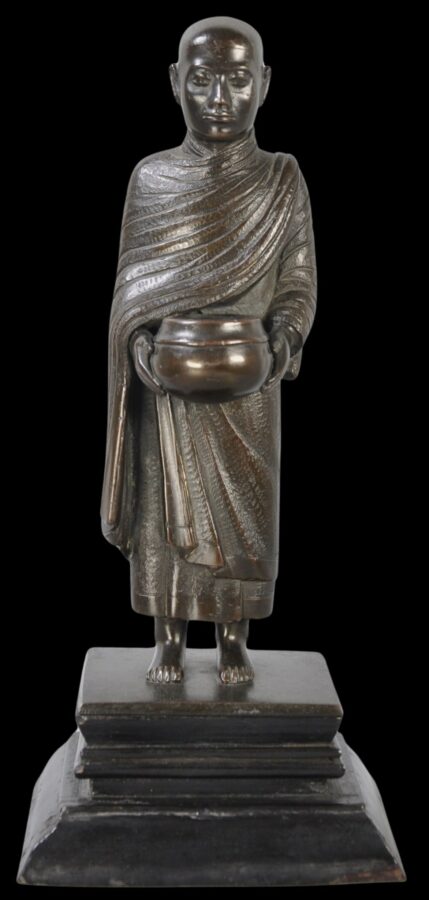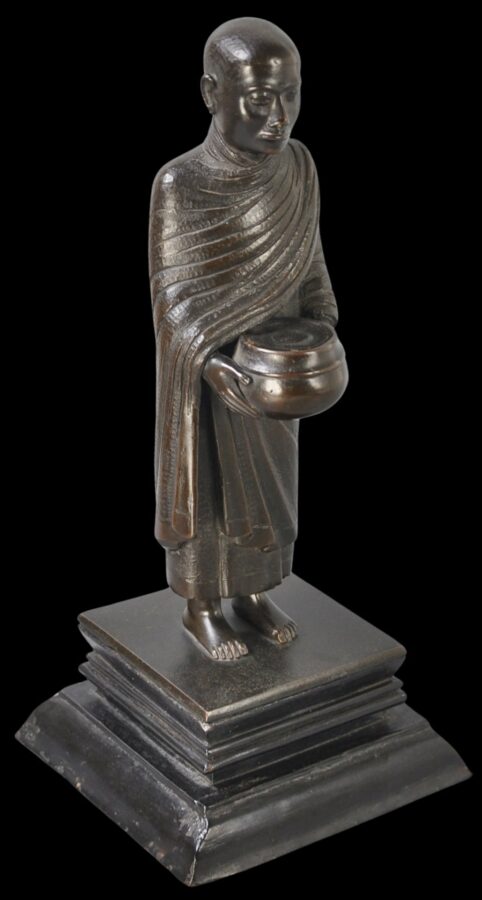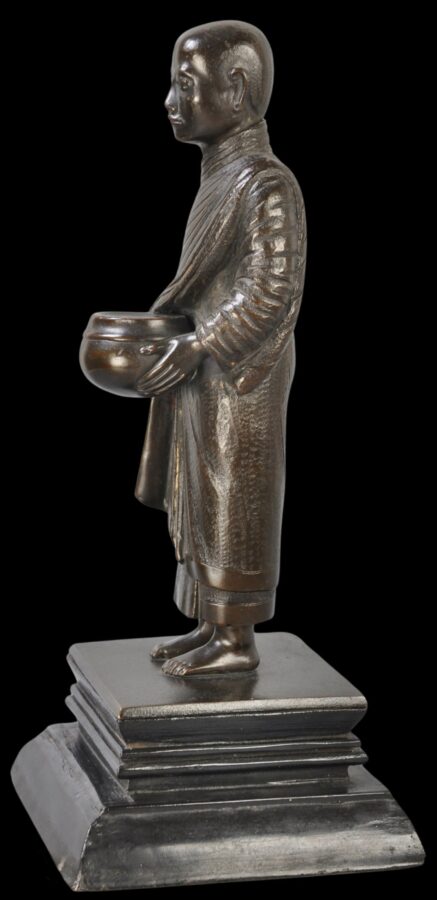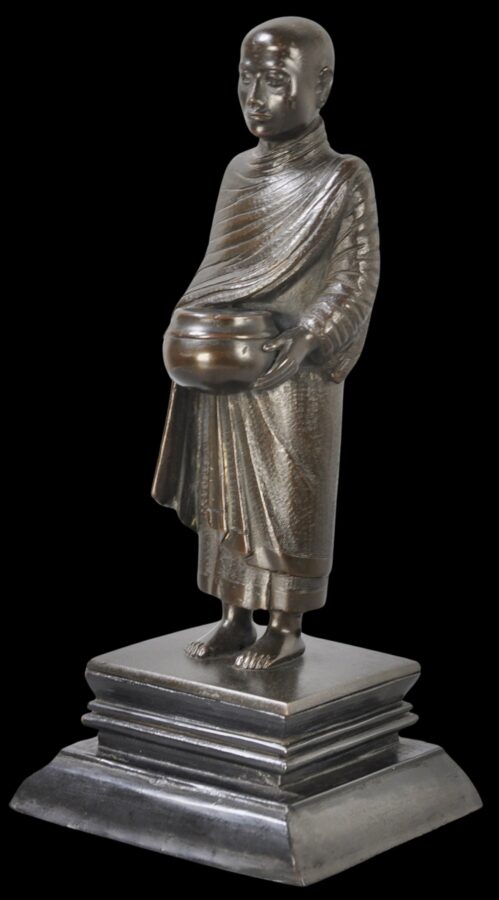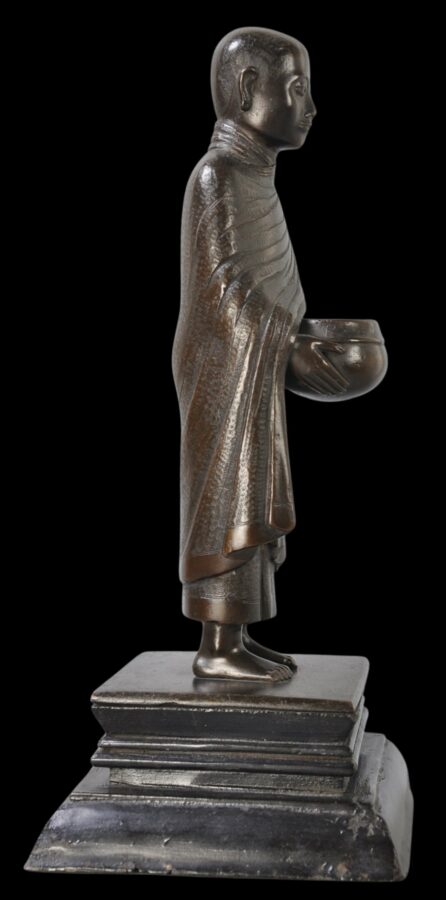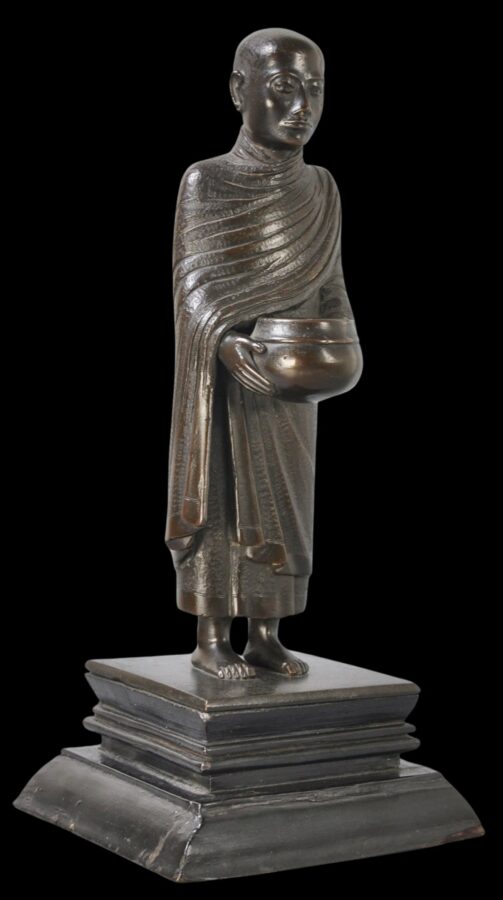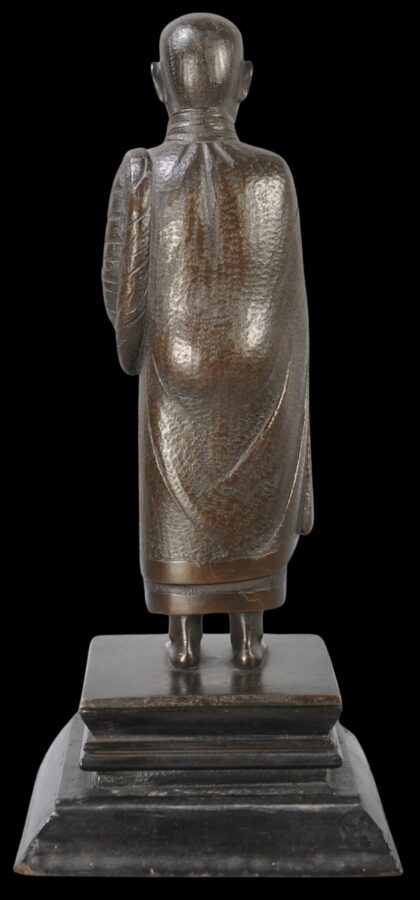Enquiry about object: 9587
Burmese Cast Bronze Monk, Retailed by Coombes, Rangoon
Pegu, Burma circa 1930
height: 19cm, width: 8.6cm, depth: 8.4cm, weight: 833g
Provenance
UK art market
This fine cast bronze shows a Burmese monk. The figure wears long robes over both shoulders and which reach to his ankles. His head is downcast, and he holds a begging or alms bowl in his hands, which in Burma traditionally is made of black lacquer over a woven bamboo strip substrate. He stands barefoot, on a square bronze plaque and this is screwed to the original tiered wooden base.
The figure is well cast and keenly observed and is among the higher quality examples of this type of casting. The underside of the base is inset with a small rectangular plaque which reads ‘Coombes Company, Ltd, Rangoon.’ Coombes was an important retailer of upmarket silver, curios, carved ivory and rubies in colonial Rangoon and was located at 12 Phayre Street. Now called Pansodan Street, it lead directly to the famous Strand Hotel.
The casters of Pegu, located near to Rangoon, produced finely detailed bronzes of local people engaged in everyday activities, such as this example. Such sculptures emerged at the same time as Burmese painters adopted Western-style realism. Their naturalistic forms drew on European techniques as well as Burmese religious statuary. Pegu bronzes made mostly for the local expatriate market were exhibited at the various British Empire Exhibitions held in the 1920s and 1940s, both in London but also in India (from where Burma was administered during colonial rule) and Rangoon itself.
Figurines such as these were bought by British administrators and their families in Burma as souvenirs and gifts for friends on their return home. As Fraser Lu (1994, p. 143) says, some examples, especially later examples, barely rise above tourist kitsch, but others, such as the the example here, with its sense of proportion, realism and attention to detail is a minor masterpieces of bronze casting. Such bronzes are testament to the ingenuity and flexibility of Burma’s master craftsmen during the colonial era who were able to switch between producing high quality items for local as well as expatriate consumption.
The sculpture here is beautiful, and in fine condition. There is a small amount of loss to the edge of the wooden base at the back of the image, so generally not visible and minor in any event. The bronze has a dark, brown patina.
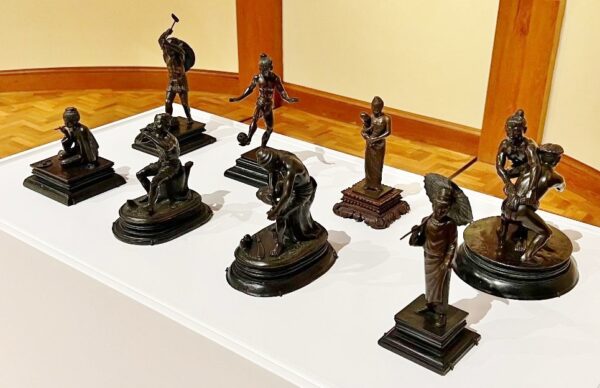
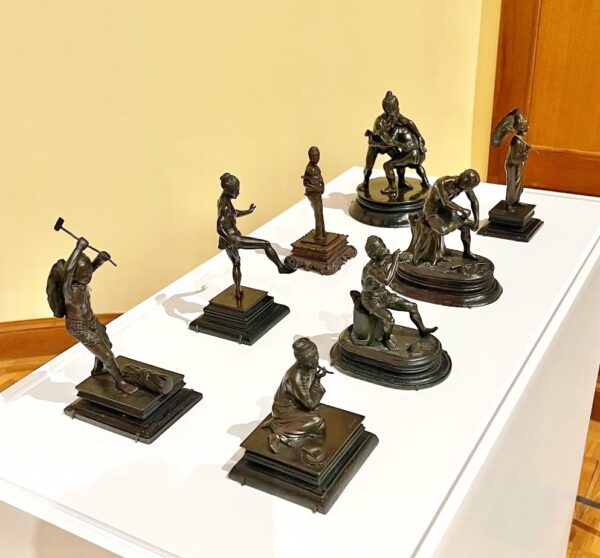
Above: Two images of a collection of Pegu bronzes we previously sold to Singapore’s National Gallery, as displayed in the National Gallery.
References
Fraser-Lu, S., Burmese Crafts: Past and Present, Oxford University Press, 1994.


